Marie Curie
 From Nwe
From Nwe
Marie Curie |
|
|---|---|
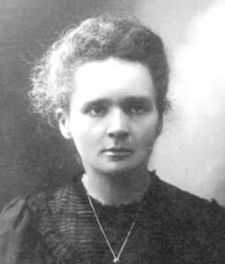 Maria Skłodowska-Curie. |
|
| Born | November 7, 1867 |
| Died | July 4, 1934 Sancellemoz, France |
| Nationality | |
| Field | Physicist and chemist |
| Institutions | Sorbonne |
| Alma mater | Sorbonne and ESPCI |
| Academic advisor | Henri Becquerel |
| Notable students | André-Louis Debierne Marguerite Catherine Perey |
| Known for | Radioactivity |
| Notable prizes | Nobel Prize for Physics (1903) Nobel Prize for Chemistry (1911) |
| The only person to win a Nobel Prize in two different science fields. | |
Marie Curie (or Maria Skłodowska-Curie, born as Maria Skłodowska; November 7, 1867 – July 4, 1934) was a physicist and chemist. She was born in Warsaw and spent her early years there, but in 1891, she moved to Paris where she obtained all her higher degrees and conducted her scientific career. She was the first woman appointed to teach at the Sorbonne. Later, she founded the Curie Institutes in Paris and Warsaw.
Mme. Curie was a pioneer in the field of radioactivity. Together with her husband Pierre Curie, she discovered two radioactive chemical elements, polonium and radium. In addition, she correctly interpreted radioactivity as a property of the atoms of radioactive substances—a view that helped other scientists clarify the structures of atoms. She became the first two-time Nobel laureate and the only person with Nobel Prizes in two different fields of science—physics and chemistry.[1]
Despite enormous family suffering, Marie and her sister Bronia rose above poverty and entered professions normally reserved for men. She then pursued her scientific work at great personal and family sacrifice. She intentionally did not patent the radium isolation process, so that other scientists would not be hindered in researching the radioactive material. During World War I, she and her daughter Irene went to the battlefront, where she worked on the use of mobile radiography units to diagnose the injuries of wounded soldiers. In this manner, although she professed no religious belief or affiliation, her virtues of extreme hard work, self-sacrifice, and altruism were the hallmarks of someone with a saintly character.
Biography
Early life
Born in Warsaw, Poland, then under the control of the Russian Empire, Maria Sklodowska, known by her nickname Manya, was a precocious learner. She demonstrated genius at age four when she astounded her parents by learning to read.
The Sklowdowska family descended from nobility. Although they had lost their lands and position, the family maintained their dignity by placing a high value on intellectual pursuits. Maria's father was a well-respected teacher. Her mother founded a private school in Warsaw.
Maria's early family life was tragically marred by death. One sister died of typhus, and just four years later, her mother, Bronislava, died of tuberculosis. Her grieving may have caused young Sklodowska to turn her passion to understanding things from a scientific rather than religious perspective. Barbara Goldsmith, one of Maria's biographers, found a passage written by the 16-year-old Manya after her cousin's child was stillborn. The passage reveals her unwillingness to accept such tragedies as "God's will," as many who professed Christianity would have it. At the same time, she expressed her respect for sincere faith but a distaste for hypocrisy. Maria wrote, "Let everybody keep his own faith so long as it is sincere. Only hypocrisy irritates me—and it is as widespread as true faith is rare… I hate hypocrisy." [2]
In spite of enormous family suffering, due in part to their patriotic activities, the family supported one another to such an extent that two of the sisters, Bronia and Maria, rose above their poverty and entered professions normally reserved for men—Bronia in medicine and Maria as a scientist.
As her intellect developed from girlhood to young womanhood, Maria turned toward "positivism," a concept introduced by the French philosopher, August Comte. Positivism stressed the empirical as opposed to the theoretical approach to solving problems and improving society. Polish positivists took this foundation and built upon it while promoting equal rights for women and a nonviolent approach to social change. This approach emphasized education as the means to achieve lasting progress. The profound influence of this philosophy, which demanded that assertions and conclusions be supported by verifiable evidence, left its hallmark on the thinking of the young Maria.
Positivism integrated with the scientific spirit of Curie's time as prevailing thinking emerged from the darkness of dogmatic religious assertions. Insistence on measurable data and verifiable proofs were hallmarks of Marie Curie's success in the field of science. Goldsmith suggests that these beliefs replaced religion for Curie and became a driving force for her achievements in life.
Maria Sklodowska maintained a deep relationship with her elder sister Bronia throughout her life. The sisters made an agreement that they would help each other advance their studies in turn. So Maria supported Bronia's study in France, first by becoming a tutor and later as a governess for a wealthy farming family in a remote area of Poland.
After graduating from high school at the top of her class at the age of 15, Maria was depleted of energy and was sent to the countryside to recover. Due to her gender and Russian (anti-Polish) reprisals following the January Uprising against Tzar Nicholas II's reformist policies, and forced conscription into the Russian army, in 1863, she was not allowed admission to any university. However, she helped to promote and attended an underground educational project known as the Flying University (Uniwersytet Latający) in Warsaw.
Moving to France
Eventually, with monetary assistance from her elder sister Bronia, Maria moved to Paris. Maria soon came to be known as "Marie," the French equivalent. She went to high school at the Collège Sévigné, and then studied physics and mathematics at the University of Paris, Sorbonne. She graduated first in her undergraduate class in the spring of 1893. A year later, she obtained her master's degree in mathematics, also at the Sorbonne. Marie became the first woman to teach there. Under the doctoral supervision of Henri Becquerel, in 1903 she received her DSC from the City of Paris Industrial Physics and Chemistry Higher Education Institute, becoming the first woman in France to complete her doctorate.
Marriage
At the Sorbonne, she met and married another instructor, Pierre Curie. Marie and Pierre were kindred spirits. Their relationship began by sharing a passion for science. Their dedication to the discovery of truth through scientific research seems to have been their own form of religion. Both Marie and Pierre were willing to sacrifice personal comfort for the cause of science, in service to humanity.
They studied radioactive materials, particularly the uranium ore pitchblende, which had the curious property of being more radioactive than the uranium extracted from it. They deduced a logical explanation: that the pitchblende contained traces of some unknown radioactive component that was far more radioactive than uranium. By the end of 1898, they discovered that the ore contained two previously unknown chemical elements: polonium (initially called Radium F) and radium.
The name radium was derived from the Latin word radius, meaning "ray." Polonium was named after Marie's native country, Poland. At the time, Poland was not recognized as an independent country but was partitioned and under Russian, Prussian, and Austrian domination. It was Marie's hope that naming the element after her homeland would call attention to its plight.
Besides discovering radioactive chemical elements, Marie correctly maintained that the radiation emanating from them was a property of the atoms of these substances, not just a phenomenon occurring around the atoms. In other words, each radioactive element would eventually give off enough of its own energy to disintegrate and reduce the mass of the original substance. This view helped scientists improve their understanding of the structures of atoms.
Sharing the Nobel Prize for Physics
Together with Pierre Curie and Henri Becquerel, she was awarded the Nobel Prize for Physics in 1903, "in recognition of the extraordinary services they have rendered by their joint researches on the ionizing radiation phenomena discovered by Professor Henri Becquerel." She was the first woman to be awarded a Nobel Prize. Eight years later, she received the Nobel Prize for Chemistry in 1911, "in recognition of her services to the advancement of chemistry by the discovery of the elements radium and polonium, by the isolation of radium and the study of the nature and compounds of this remarkable element." Henri Becquerel was instrumental in recommending her for the Nobel Prize when others were opposed, largely due to prejudice against women.
In an unusual move, Curie intentionally did not patent the radium isolation process, instead leaving it open so the scientific community could perform research unhindered. Just one month after accepting her 1911 Nobel Prize, Marie was hospitalized with depression and kidney trouble. Her attitude toward fame and toward her contributions to the advancement of science reveals a selflessness and an altruism that was entirely in keeping with her natural predisposition. In a sense, she could be described as a "saintly scientist."
She was the first person to win or share two Nobel Prizes. She is one of only two people who has been awarded a Nobel Prize in two different fields, the other is Linus Pauling. As of December 2006, she remains the only woman to have won two Nobel prizes. Later, in 1935, her eldest daughter, Irène Joliot-Curie, won the Nobel Prize for Chemistry.
Widowhood and scandal
After her husband's death from a street accident, Marie Curie was appointed to fill his vacated post at the Sorbonne. Certainly the trauma of losing her life partner and her closest scientific associate, Pierre, upset Madame Curie. Her journal, which she meticulously kept, contains many letters written to the departed Pierre and reveals a sweet and tender relationship as well as the grieving process that the newly widowed Marie endured.
Some time later, perhaps compelled by loneliness and the need for intellectual companionship, Marie Curie began spending more time than was seemly with physicist and colleague Paul Langevin. Langevin was estranged from his wife at the time. He had taken an apartment near the school where he and Marie frequently met. The scandal that ensued was used by her academic opponents to damage her credibility. Curie wisely ended the relationship after it became obvious that it would damage both her spirit and her ability to continue to be effective in her career.
Despite her fame as an honored scientist working for France, the public's attitude toward the scandal tended towards xenophobia. She was a foreigner, from an unknown land. Poland was still referred to as a geographical area, under the Russian Tsar, an area known to have a significant Jewish population. Marie was raised as a Catholic, and was born into a gentry family (Dołęga-Sklodowski), but she later became an atheist). France at the time was still reeling from the effects of the Dreyfus affair, so the scandal's effect on the public was all the more acute. By some strange coincidence, Langevin's grandson Michel later married Marie's granddaughter, Hélène Langevin-Joliot.
World events soon overshadowed Paris scandals. Marie began a new chapter in her life with a very practical application of the discoveries she had made regarding radiation. World War I, which lasted from 1914 to 1919, brought an end to ordinary life in Europe and especially in France. Everyone's attention turned to the war effort. The defense of France became the paramount concern. In a letter to Langevin written in 1915, Marie Curie wrote, "I am resolved to put all my strength at the service of my adopted country since I cannot do anything for my unfortunate native country just now… " [3]
World War I
During World War I, she pushed for the use of mobile radiography units, named "Little Curies" (or "petites Curies"), to help diagnose the injuries of wounded soldiers. Radiation technology was in its infancy, but it was effective in helping doctors evaluate the condition of broken bones and bullet wounds. These units were powered using tubes of radium emanation, a colorless, radioactive gas given off by radium, later to be identified as radon. Marie personally provided the tubes, derived from the radium she purified. By the height of the conflict, she raised money and, with the approval of the French government, commissioned several auto mechanic shops to construct 20 vehicles to carry the mobile radiography units. Her 17-year-old daughter, Irene, became her first assistant. Both went to the battlefront in 1914.
Marie died in Sancellemoz (near Sallanches), France, in 1934. At first, she was buried at the same cemetery in Sceaux where Pierre lay, but in 1995, their ashes were transferred to the Panthéon to honor their works.
Her death was from either aplastic anemia or leukemia. Her illness was almost certainly due to her massive exposure to radiation in her work. Much of the work was carried out in a shed with no proper safety measures being taken. The damaging effects of hard radiation were not generally understood at that time. She was known to carry test tubes full of radioactive isotopes in her pocket, and store them in her desk drawer, resulting in massive exposure to radiation. She was known to remark on the pretty blue-green light the metals gave off in the dark. Yet, in her later years, she was disappointed by the myriad of physicians and cosmetics makers who used radioactive material without precautions.
Marie Curie's autobiographical notes provide a description of how she gathered materials and established radiological centers as well.[4] It is fair to say that her pioneering work in the field of radioactivity, performed at great personal and family sacrifice, formed a large part of the foundation for the modern medical field of radiology.
Prizes
- Nobel Prize for Physics (1903)
- Davy Medal (1903)
- Matteucci Medal (1904)
- Nobel Prize for Chemistry (1911)
- Awarded an Honorary Doctor of Science Degree from the University of Chicago, June 14, 1921
Tributes
- Marie Curie's younger daughter Eve Curie wrote the biography Madame Curie after Marie's death.
- In 1995, Madame Curie was the first and only woman whose ashes were laid to rest under the famous dome of the Panthéon in Paris on her own merits (alongside the ashes of her husband Pierre Curie).
- Element 96, curium (Cm), was named in honor of Marie and Pierre Curie.
- Curie's picture was on the Polish 20,000-zloty banknote in the late 1980s. Her picture also appeared on the last French 500 franc note (with her husband Pierre Curie), and on stamps and coins.
- Greer Garson and Walter Pidgeon starred in the 1943 U. S. Oscar-nominated film based on her life.
See also
Notes
- ↑ If one were to take into account the effects of sharing, she effectively obtained 1.25 Nobel Prizes.
- ↑ Barbara Goldsmith, (2005). Obsessive Genius: The Inner World of Marie Curie. (Great Discoveries) (New York: W.W. Norton & Co., ISBN 0393051374), 34.
- ↑ Naomi Pasachoff. "Marie Curie History and the Science of Radioactivity" Center for History of Physics, the American Institute of Physics. Retrieved December 5, 2006.
- ↑ Marie Curie. (1923). Autobiographical Notes. New York: Macmillan.
References
ISBN links support NWE through referral fees
- Curie, Eve. Madame Curie: A Biography. Cambridge, MA: Da Capo Press, Perseus Books. 2001. ISBN 0306810387.
- Goldsmith, Barbara. Obsessive Genius: The Inner World of Marie Curie. Great Discoveries. New York, NY: W.W. Norton & Co., 2005. ISBN 0393327485.
- Pasachoff, Naomi E. Marie Curie: And the Science of Radioactivity. Oxford Portraits in Science. New York, NY: Oxford University Press, 1997. ISBN 0195120116.
- Quinn, Susan. Marie Curie: A Life. Radcliffe Biography Series. Reading, MA: Addison-Wesley, 1996. ISBN 0201887940.
External links
All links retrieved November 6, 2022.
- Biography at American Institute of Physics website (site also has a short version for kids entitled "Her story in brief!")
- Ron Schuler's Parlour Tricks: Marie Curie
- Marie Curie on the 500 French Franc and 20000 old Polish Zloty banknotes.
|
||||||||
1901: Jacobus Henricus van 't Hoff | 1902: Hermann Emil Fischer | 1903: Svante Arrhenius | 1904: William Ramsay | 1905: Adolf von Baeyer | 1906: Henri Moissan | 1907: Eduard Buchner | 1908: Ernest Rutherford | 1909: Wilhelm Ostwald | 1910: Otto Wallach | 1911: Marie Curie | 1912: Victor Grignard, [Paul Sabatier | 1913: Alfred Werner | 1914: Theodore William Richards | 1915: Richard Willstätter | 1918: Fritz Haber | 1920: Walther Nernst | 1921: Frederick Soddy | 1922: Francis William Aston | 1923: Fritz Pregl | 1925: Richard Adolf Zsigmondy |
Credits
New World Encyclopedia writers and editors rewrote and completed the Wikipedia article in accordance with New World Encyclopedia standards. This article abides by terms of the Creative Commons CC-by-sa 3.0 License (CC-by-sa), which may be used and disseminated with proper attribution. Credit is due under the terms of this license that can reference both the New World Encyclopedia contributors and the selfless volunteer contributors of the Wikimedia Foundation. To cite this article click here for a list of acceptable citing formats.The history of earlier contributions by wikipedians is accessible to researchers here:
The history of this article since it was imported to New World Encyclopedia:
Note: Some restrictions may apply to use of individual images which are separately licensed.
↧ Download as ZWI file | Last modified: 02/03/2023 20:16:51 | 2 views
☰ Source: https://www.newworldencyclopedia.org/entry/Marie_Curie | License: CC BY-SA 3.0
 ZWI signed:
ZWI signed: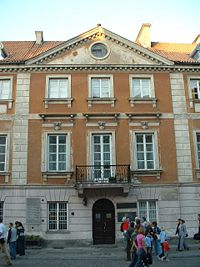
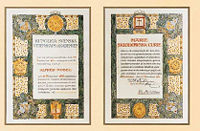
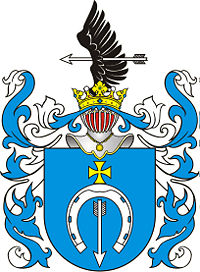
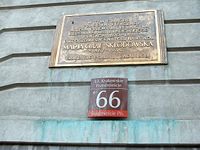
 KSF
KSF